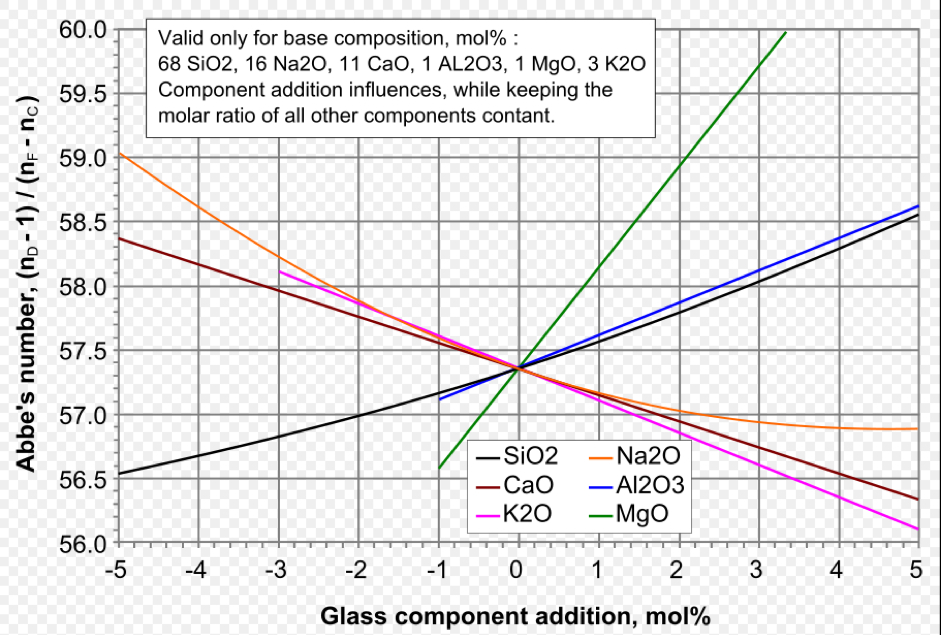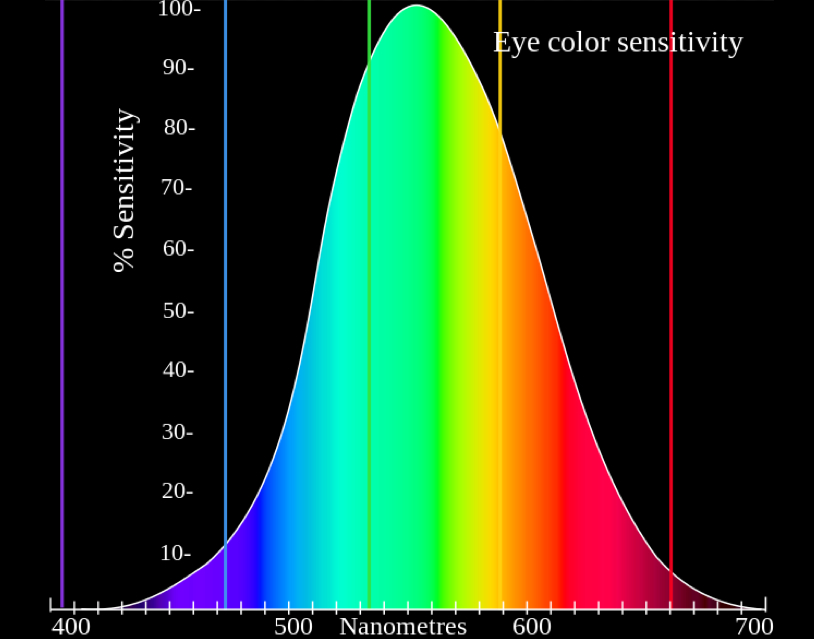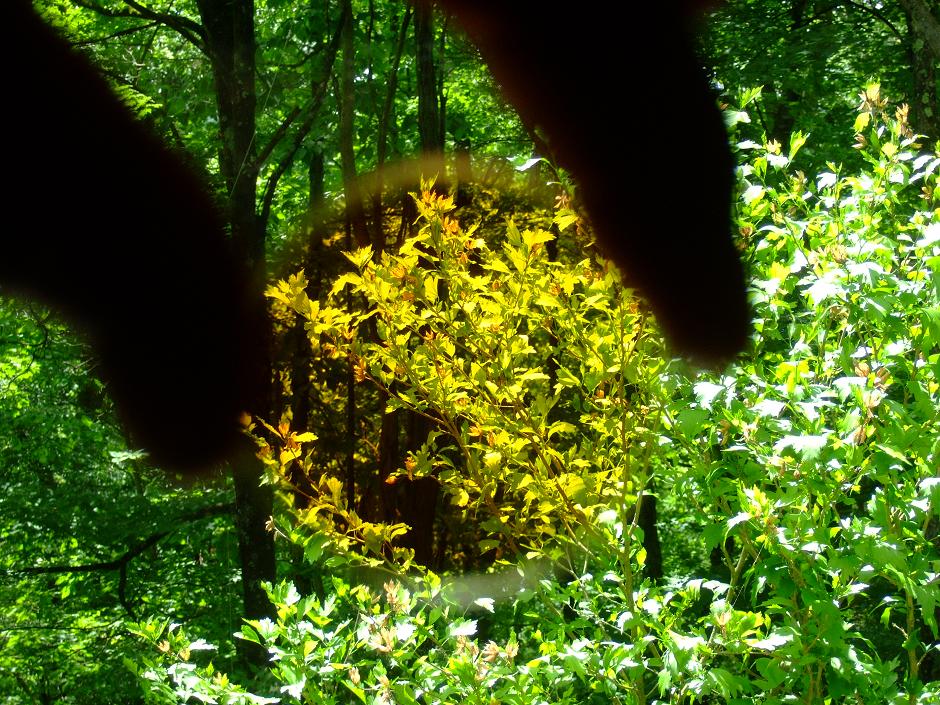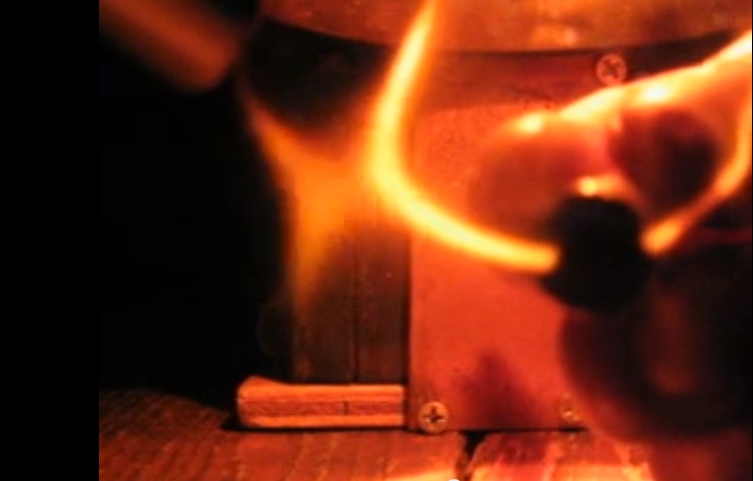Cell Sensitivity, Bandpass & Grade
These are major factors that determine image brightness,
contrast, bandwidth and clarity of light transmitted out of the cell.
Sensitivity
The first factor to consider is glass thickness. The applied magnetic field
has less effect on the active Ferrofluid thin-film as their distance increases.
You can see by the green line on the graph (above) how quickly the strength falls off a short distance away from the
magnet (inverse cube law). Thicker glass requires a more powerful magnetic field than thinner glass does to resolve an image
due to the additional distance from the outer glass surface to the inner Ferrofluid thin-film layer.
A typical Neodymium magnet will exert much more field strength than can be obtained from a small coil around a core.
That's why an MRI machine is so big. To reach 2 or 3 Tesla, MRI coils have to be huge and they consume massive
amounts of current. Whereas a 2" x 2" Neo can have a surface strength of 2 Tesla simply and economically.
The only drawback is you can't turn a magnet off.
Thin cells are well suited for experiments using electromagnetic induction due to the reduced field strength required to activate one.
Bandpass
As the glass gets thicker, the amount of light passing through gets attenuated
by a greater amount. Various types of glass each have their own transmittance values.
There is a limit on how thin the glass can be for a Ferrocell. It's determined by its surface area.
A 100mm disk will flex if the thickness is 1mm or less. This will lead to light and dark patches
of fluid inside the cell after a few times of use. Glass that's too thin is also more likely to leak.
The thin edges make it difficult to evacuate and seal the cell properly.
A second factor is the type and quality of glass. Ordinary window glass works well,
however, its difficult to find this type of glass with an optical quality surface area.
An un-even surface results in dark and light patches of fluid inside the cell and
reduces the ability to mate both glass disks close together. As particle density increases
(thicker), light passing through the cell gets attenuated at an exponential rate.
For example, if the fluid thickness changes from 10 microns to 20 microns, we will see 100 times less light
out of the cell. Along with this severe attenuation, the cell's bandpass response changes dramatically.
Violet, blue and some green will be lost if the fluid particle density is excessive.
A 30 micron layer will attenuate up to 60% of light with a greater bandpass in the yellow and red wavelengths.
An extremely flat surface results in a cell with a broad bandwidth (red to UV) and high resolution.
All Ferrocells made after January 1, 2019 have wide response (UV to IR) and are highly sensitive to magnetism.
The drawback is cost. A grade 1 glass disk with 1/10th wave surface accuracy will cost at least 10 times
more than a 1 wave for the same diameter. Grade 1 quality optical windows are normally made with a
surface accuracy within +/- 1/4 wavelength. Experimenter grade glass has a wider +/- 3 wavelength and falls into the
grade 2 class. This specification refers to the flatness of the glass face within 550nm
across the major portion of its area. We want a cell with maximum resolve and a highly detailed image
that falls within our eyes spectrum range. This is one reason I prefer a green LED or laser for experiments.
Green is within our eyes peak sensitivity.
Grade
Cell grading is based on fluid density, thickness and transparency. A light grade cell with .5 gm/ml density is usually made from the higher
quality glasses. To create a cell with maximum transparency the disks must be as close as possible. The output of
a grade one 1/20th wave Ferrocell will look 99% transparent to the incoming light, except where the field potential ring manifests.

|
This is an example of how clear a 1/20th light grade cell can display magnetic flux. Notice how transparent the cell looks. A 1.2T cylinder magnet is setting on the top face of a Ferrocell. White LED 60mm below cell. White changes to blue (in a similar manner to our Earths sky) after passing through the particle chains. Its a property known as Rayleigh Scattering.
(note: blue LED's weren't available when this picture was taken (2006).
|
Grade 1 glass is available with many surface tolerances. 1 wavelength, 1/4, 1/10th, 1/20th are all within grade 1.
Most 1/4 wave Ferrocells are medium-light grade, but are classified as medium.
Grade 2 glass is usually used to create medium grade Ferrocells. In some instances, a light grade cell can be
made with grade 2 glass, as the spec's require the glass to fall between +3 & -3 wavelengths of flatness
across its surface area. Sometimes the occasional 'perfect' set of glass disks will mate together
to form a smooth, well distributed and thin layer. However, a typical 509 medium grade cells may appear
slightly "blotchy" when held up to a light due to its .6 gm/ml particle density.
Grade 3 glass is what I consider 'construction grade'. Windows in your home, garage or shed will fall into this category.
They are mostly flat across their surface, but they can also be a bit 'wavy'.
Hard, clear acrylic plastics will work, too. The drawbacks of plastics are distortion of the images, graininess and more prone
to heat damage from excess magnetic fields over-saturating the particle chains inside the cell. The advantages are
lower costs, easier to fabricate and higher durability.
Grading of Ferrocells
The Visible Light Spectrum in nanometers (nm)
|
Chart on right shows frequency response of the white lamp used for reference in these tests.
Peak sensitivity is in the 490-600nm
(green/yellow/orange range).
|
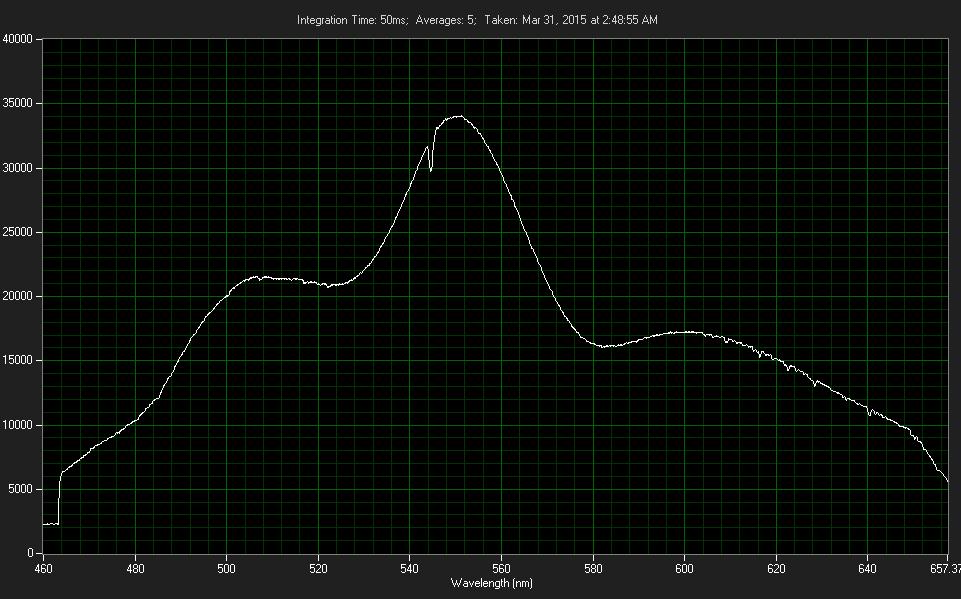 |
|
This chart shows the transmission mode of a light gauge cell with a particle density of .5 gm/ml. Peak sensitivities are 550-610nm (green, yellow and orange range).
These cells are good for green, yellow, orange
and light red LEDs.
Ultra-flat glass surfaces are required to make the fluid thin enough and evenly dispersed.
1/10th wavelength surface accuracy glass is used to make these cells and their cost is 3-4 times greater than 1 wavelength accuracy glass (general optical quality).
|
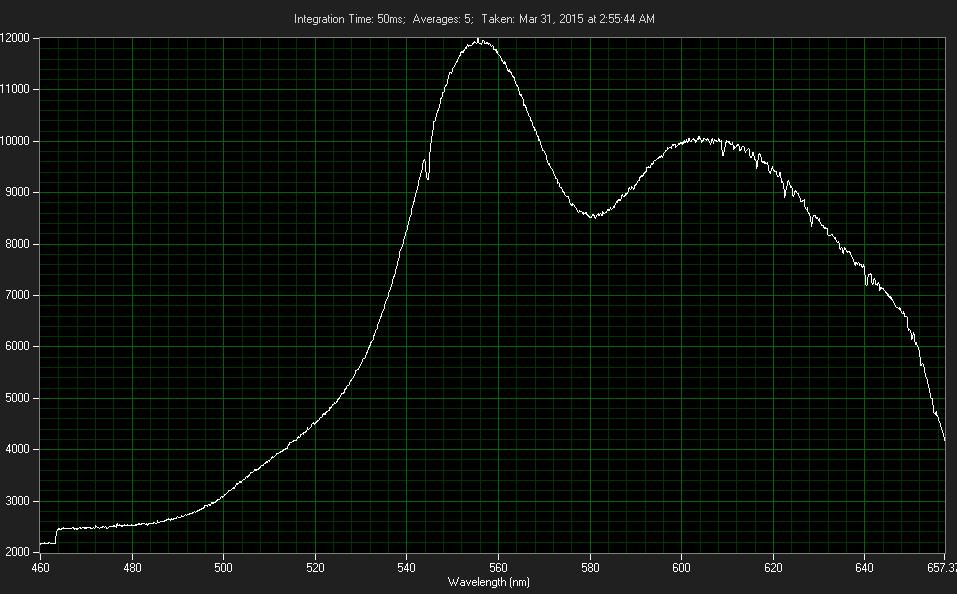 |
|
This chart shows the transmission mode of a medium gauge cell with a particle density of .8 gm/ml. Peak sensitivities are 550-600nm (yellow and orange/red range).
These cells are good general purpose for LED or laser and can be made with standard 1 wavelength surface accuracy optical glass.
Better image quality and a wider frequency response can
be obtained with 1/4 wavelength or more precision
optical glass.
|
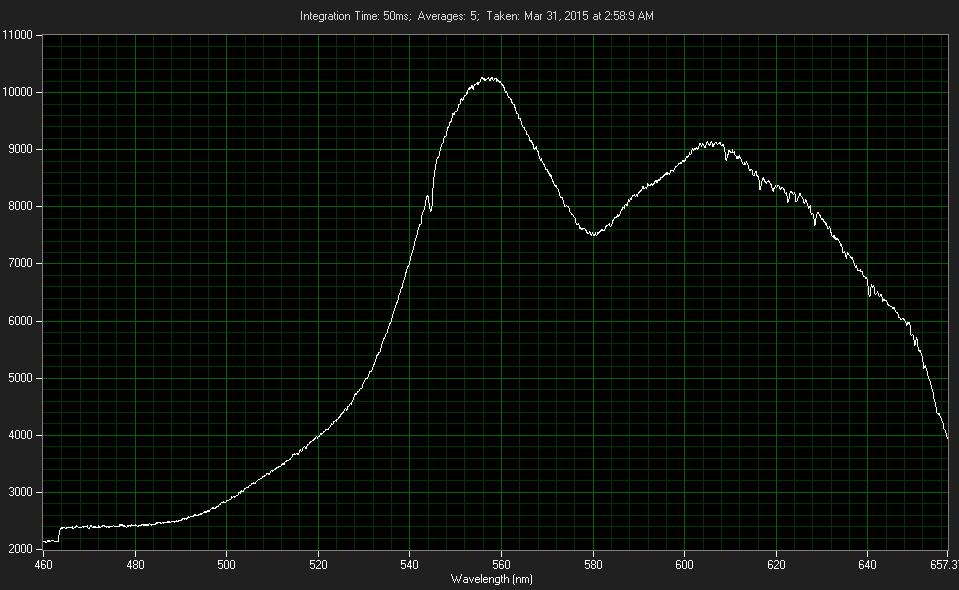 |
|
This chart shows the transmission mode of a heavy gauge cell with a particle density of 1.2 gm/ml. This is 100% density of EFH1 fluid. Peak sensitivities are 510-657nm (green/yellow, orange/red
and beyond, into the infrared range).
Notice the severe attenuation of light blue at 470nm.
These cells work best for green, red and infrared lasers due to their high amount of attenuation in the shorter wavelengths. They can be made using almost any type of flat glass.
|
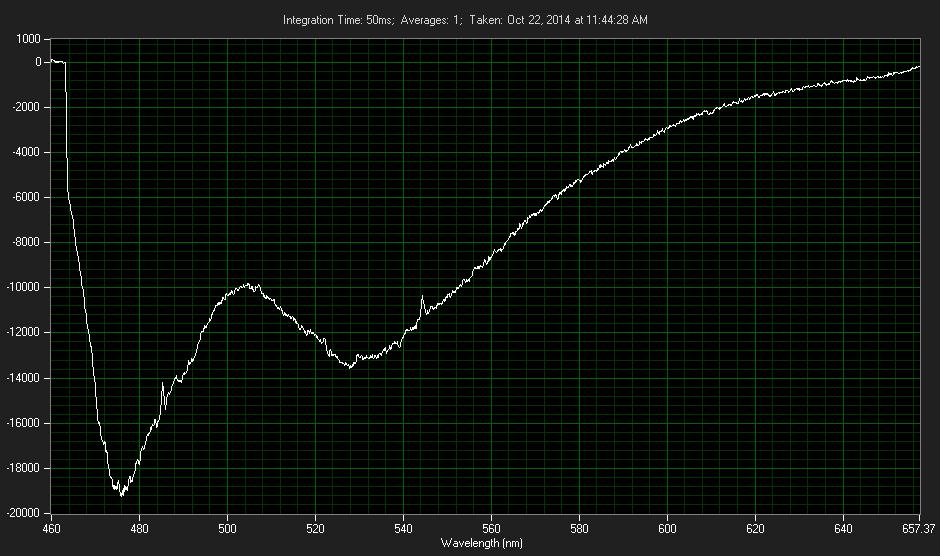 |


